Binance US vs Coinbase: Which Exchange is Better?
Cryptocurrency is one of the biggest buzzwords of the decade, and everyone from tech geeks to financially savvy business people and everybody else between has been getting involved (read this – Binance vs Binance US).
The main focus of our article is on two of the biggest competitors in this arena for the United States of America. The great debate here is Binance US vs Coinbase – and we’re going to unpack both platforms to help you draw your own conclusions.
Coinbase is available in more states, but Binance US has lower fees and more features.
Binance US has lower trading fees.
- Go to the Receive tab in the Send/Receive part of the Coinbase dashboard.
- Select the asset you want to transfer and copy the associated address.
- Go to the Fiat and Spot section of your Binance US wallet and select “Withdraw.”
- Select the same asset to transfer and paste the copied address from Coinbase in the Address field.
- Specify the amount you want to transfer and confirm the withdrawal. 2FA and verification may be required to complete this process.
✅ Yes, you can stake crypto on Binance US.
✅ Yes, taxes are declared and payable to the IRS on Binance US.
✅ Yes, there is Binance US mobile app available for Apple and Android alike.
Coinbase has more crypto coins and tokens available.
Although Binance has been around since 2017, it only launched its US version in 2019 and has made giant leaps and strides to be a stiff competitor to Coinbase, founded in 2012.
Binance US started with a limited offering. However, as Binance is such a juggernaut abroad, its rise to power as a disruptor in the American cryptocurrency game has been all but inevitable.
Coinbase boasts hundreds of thousands of regular traders across the US and Europe and is widely considered the safest way to trade cryptos. Beginners are drawn to Coinbase due to its simplicity (read this – difference between Coinbase and Coinbase Pro).
Introduction to Binance US vs Coinbase Exchanges
Cryptocurrency refers to a medium of exchange that is encapsulated in binary data. The ownership of the cryptocurrency is reflected in the ledger. The ledger is a computerised database that uses robust cryptography to track transactions, mint new coins, and verify and confirm any transfers that take place.
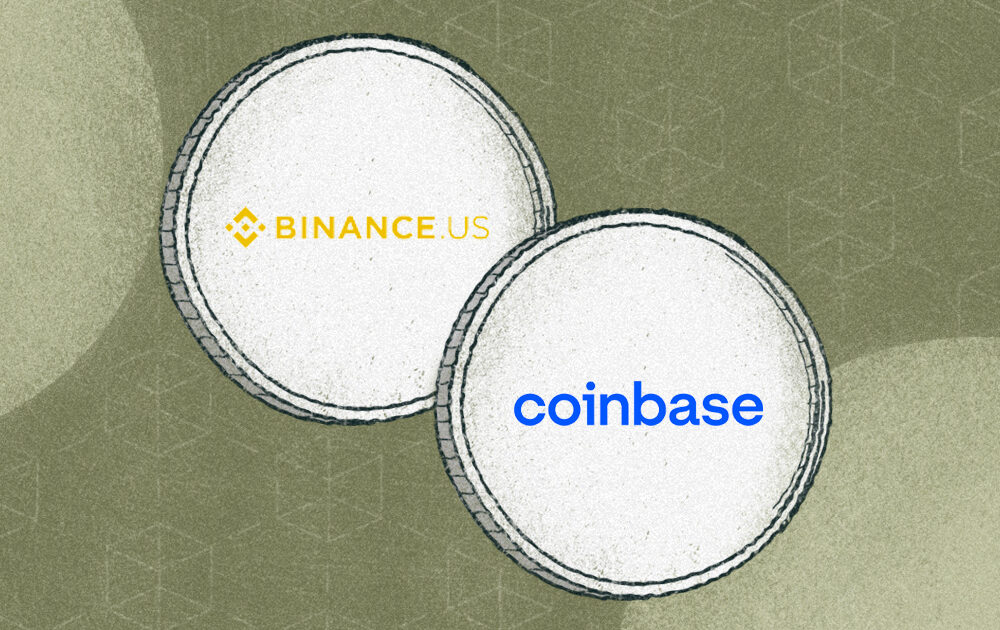
Bitcoin was the first cryptocurrency. It was founded as an open-source project in 2009 by Satoshi Nakamoto. Nakamoto passed the project on to Gavin Andresen, who sought to decentralise it in 2010.
In the early 2010s, cryptocurrency exchange platforms started to become prominent with the advent of Bitcoin as a cryptocurrency. A cryptocurrency exchange (also referred to as a digital currency exchange) allows users to trade cryptocurrency for other cryptocurrencies, digital currency, or even fiat currency.
What is Binance US?
More often than not, cryptocurrency trading platforms that start outside the USA have difficulties competing with American platforms. This is not the case for Binance, which started in China in 2017.
Later, the company relocated its headquarters to the Cayman Islands as the Chinese government expressed more interest in cryptocurrency regulation. They ultimately outlawed cryptocurrencies in 2017 and shut down 173 platforms in 2018.
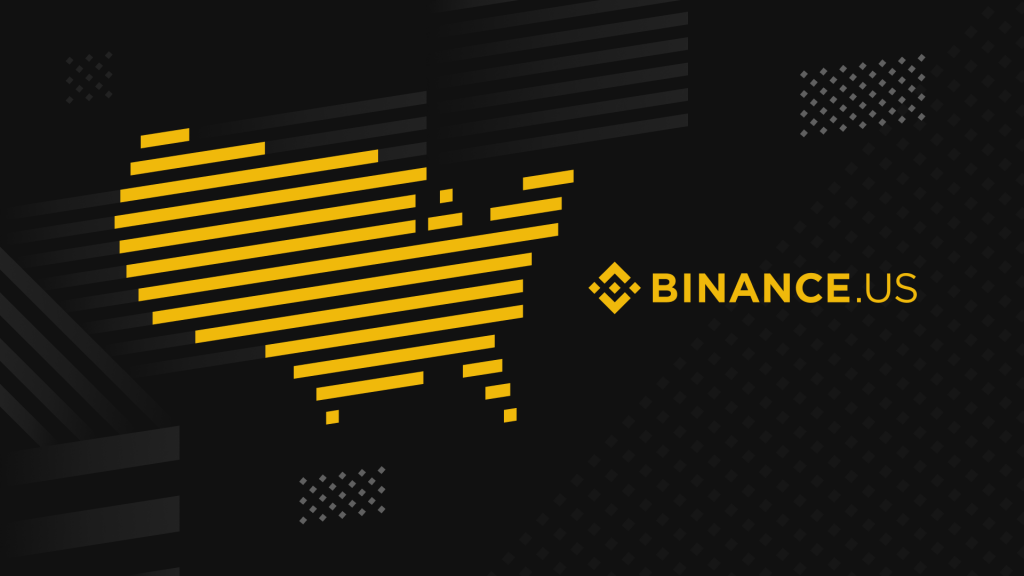
To adhere to the applicable laws and regulations in the United States, the company went from Binance to Binance US in 2019–a different exchange that has garnered much approval for its similarity to Binance’s core exchange in terms of its offerings and features.
The key difference concerning Binance vs Binance US is that Binance is the core crypto exchange platform available worldwide, while Binance US is a separate platform specifically for US markets.
What is Coinbase?
Coinbase is an American cryptocurrency exchange platform initially founded in 2012, with its initial bitcoin trading facility being launched as the brand Coinbase Exchange. Later, it was renamed the Global Digital Asset Exchange (GDAX) in May 2016 and ultimately Coinbase Pro in May 2018.
You may ask yourself “What is Coinbase vs Coinbase Pro?” and the answer is really quite straightforward. Coinbase is the name of the company, while Coinbase Pro is the exchange platform offered by them.
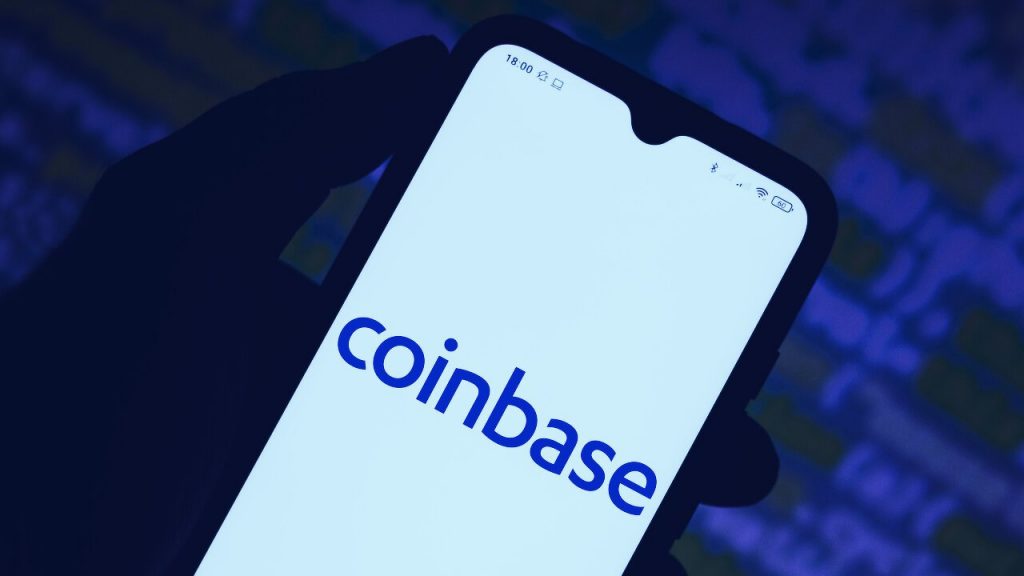
It is the most popular platform in the United States of America concerning trade volume, with a posted value of $462 billion for Q2 2021.
Binance US fees vs Coinbase Fees
Despite both serving the same target market in the United States, the structures for Binance US fees vs Coinbase fees sit in stark contrast to one another, with one being more user-friendly and the other having harsher trading fees for its users.
Both exchanges charge a maker fee (a percentage of the transaction when the order provides liquidity) and a taker fee (a percentage of the transaction when the order takes away liquidity) that generally reduces in size with the trade value.

Coinbase charges this percentage as a USD amount, while Binance US offers its traders the option to pay these fees at a discounted rate with their Binance Coin (BNB) balance instead of a USD amount as a raw percentage.
Trading Fees Compared: Which One is Cheaper?
By and far, Binance US has a cheaper fee structure for trading on its exchange when compared to that of Coinbase. Binance also offers a 25% discount on its fees when using their cryptocurrency, the BNB.
For more clarity regarding fees on Binance US vs Coinbase, let’s take a look at the table below:
| Trade value | Taker fee | Maker fee | Exchange |
|---|---|---|---|
| <=10,000 USD | 0.5% | 0.5% | Coinbase |
| 10,000-50,000 USD | 0.35% | 0.35% | Coinbase |
| <=50,000 USD | 0.1% | 0.1% | Binance US |
| 50,000-100,000 USD | 0.25% | 0.15% | Coinbase |
| 50,000-100,000 USD | 0.09% | 0.09% | Binance US |
| 100,000-500,000 USD | 0.09% | 0.08% | Binance US |
| 100,000-1,000,000 USD | 0.2% | 0.1% | Coinbase |
| 500,000-1,000,000 USD | 0.08% | 0.07% | Binance US |
| 1,000,000-5,000,000 USD | 0.07% | 0.05% | Binance US |
| 5,000,000-10,000,000 USD | 0.06% | 0.04% | Binance US |
| 1,000,000-20,000,000 USD | 0.18% | 0.08% | Coinbase |
| 10,000,000-25,000,000 USD | 0.06% | 0% | Binance US |
| 20,000,000-100,000,000 USD | 0.15% | 0.08% | Coinbase |
| 25,000,000-100,000,000 USD | 0.05% | 0% | Binance US |
| 100,000,000-250,000,000 USD | 0.04% | 0% | Binance US |
| 250,000,000-500,000,000 USD | 0.03% | 0% | Binance US |
| 100,000,000-500,000,000 USD | 0.1% | 0.02% | Coinbase |
| 500,000,000+ | 0.02% | 0% | Binance US |
| 500,000,000-1,000,000,000 USD | 0.06% | 0% | Coinbase |
| 1,000,000,000-2,000,000,000 USD | 0.05% | 0% | Coinbase |
| 2,000,000,000+ USD | 0.04% | 0% | Coinbase |
Binance US only charges 0.1% of the trade value for its taker and maker fees under $50,000, while Coinbase starts at five times that amount for values under $10,000 and reduces to 0.35% up to $50,000.
For larger trades, Binance US completely gets rid of its maker fees from $10 million upwards, whereas Coinbase only drops its maker fees to 0% from trade values of $500 million upwards.
With this data in mind, it is clear that it comes down to Coinbase Pro vs Binance US fees, Binance US is the superior option in terms of affordability, both for casual traders who work with less than $50,000 a month and for whales who spend more than $500 million a month on trading via the exchange platform.
Regarding Coinbase Pro vs Coinbase fees, the fees for Coinbase Pro are quite high.

Coinbase and Binance US Functionality
Coinbase and Binance US are both available in the continental United States. However, Coinbase is unavailable in Hawaii, while Binance US is unavailable in Connecticut, Hawaii, Idaho, Louisiana, New York, Texas and Vermont.
For one fortunate enough to be living in California, Georgia, Florida, or any of the 43 states where both are available, the features and facilities of each exchange offer a lot to consider and dissect.
Coinbase’s features are quite rudimentary and ideal for those new to trading. More experienced traders will be left wanting more in this regard as the features lack the advanced options they might want to use.
Coinbase Pro offers a basic trading terminal with limited functionality, spot market trading support, limit orders for any trading pair, manual market orders, and stop orders. Although these features are quite limited, it is still a great place for anybody interested in starting their cryptocurrency trading journey.

Binance US is well-known for its impressive features designed to mirror Binance’s core offering that includes advanced tools that seasoned trading veterans can use to plan their next move more thoroughly.
Binance’s core exchange platform boasts more features than any other crypto exchange platform, and Binance US has a special subset of these features, with more of them likely to be added in the future.
Binance US offers a basic trading terminal that is ideal for newbies, and it also has an advanced trading terminal that more skilled traders would benefit from using.
Entities looking to execute large amounts of trade will delight in Binance US’s over-the-counter trading offers as well as their one-cancels-the-other trades for more advanced traders.

Like Coinbase Pro, Binance US offers spot market trading support, limit orders for any trading pair, market orders, and stop limits. However, they do not share one aspect: Binance US offers a flexible staking feature that allows its traders to claim a staking reward simply for holding onto assets on the platform.
Crypto Staking in Binance US and Coinbase
Both Binance US and Coinbase offer staking features on their platforms. Staking refers to the ability of a trader to hold onto a cryptocurrency and get rewarded for doing so.
When one stakes a claim on crypto, they also contribute to the overall security, efficiency and integrity of the blockchain, the network and the crypto all at once.
Because you are holding onto an asset, it supports the very operation of the underlying transactions, and if it validates transactions and blocks, the holder gets a greater staking reward.
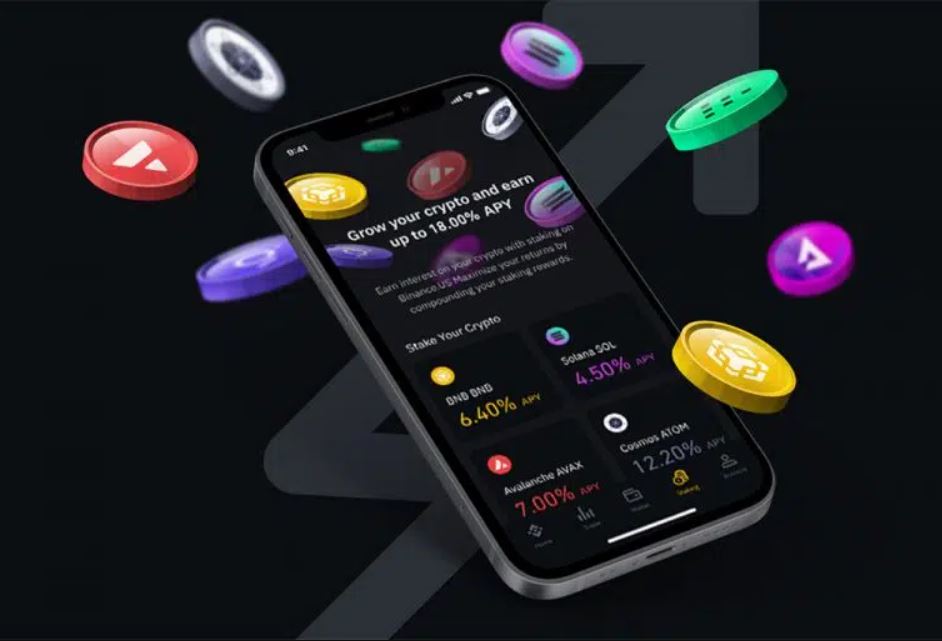
Insofar as cryptocurrencies eligible for staking on Binance US vs Coinbase are concerned, Binance US only supports two of them: Algorand and Cosmos. Coinbase supports those two, and another two: Tezos and the valuable Ethereum.
Leverage Trading in Coinbase and Binance US
Leverage trading refers to borrowing funds to increase the trader’s prospects beyond what is currently allowed. It is also called futures trading or margin trading. It is limited to professional traders on Coinbase in 23 states. You cannot partake in leverage trading on Binance US.
Mobile App Comparison
Both Coinbase and Binance US offer mobile apps for their exchange platforms on Apple’s App Store and Android’s Google Play store. The apps are free to download and use on your smartphone.
Both apps offer more or less the same features found on the main sites, but some of them may be limited or missing on the mobile apps.

On the Google Play store, when it comes to Coinbase vs Binance US, Coinbase Pro has an average user rating of 3.7 out of five stars with 20,782 reviews, whereas Binance US has an average user rating of 2.4 out of five stars with 6,604 reviews.
On the Apple App Store, Coinbase Pro has an average user rating of 4.7 out of five stars with over 148.8 thousand reviews, while Binance US has an average user rating of 4.2 out of five stars with over 87.7 thousand reviews.
Volume and Coin Availability in Coinbase and Binance US
Both these exchange platforms boast hundreds of assets that you can trade, including the highly coveted Bitcoin, Etherium, Binance Coin, Dogecoin, and USD coin. Binance US features 119 various coins and tokens currently being traded, while Coinbase has as many as 390 of them.
Which Coins Can You Trade?
According to their official websites, Coinbase supports up to 140 digital assets while Binance US supports 65 of them. Both of the exchanges support most of the valuable ones, so naturally, this includes Bitcoin, Bitcoin Cash, Ethereum, Ethereum Classic, Compound, Aave and Solana. Elrond and BNB are missing from Coinbase’s offering while they are available on Binance US.

Trading Volume Compared
At the time of writing, the trading volumes of Binance US vs Coinbase are as follows: Coinbase had a 24-hour trading volume of $5,134,109,467.60, while Binance US had a trading volume of $568,548,722.43 for the same period.
With these figures, Coinbase’s trading volume over the 24 hours is approximately 9.1 times greater than that of Binance US.
Binance US vs Coinbase – Summary
So we’ve taken a look at various aspects of both of these exchanges, from the fees and trading volumes to the availability of various coins and the user-friendliness of their mobile apps.
While Coinbase remains a firm favourite in its home market of the United States of America, it is evident that Binance US is giving them a run for their money.
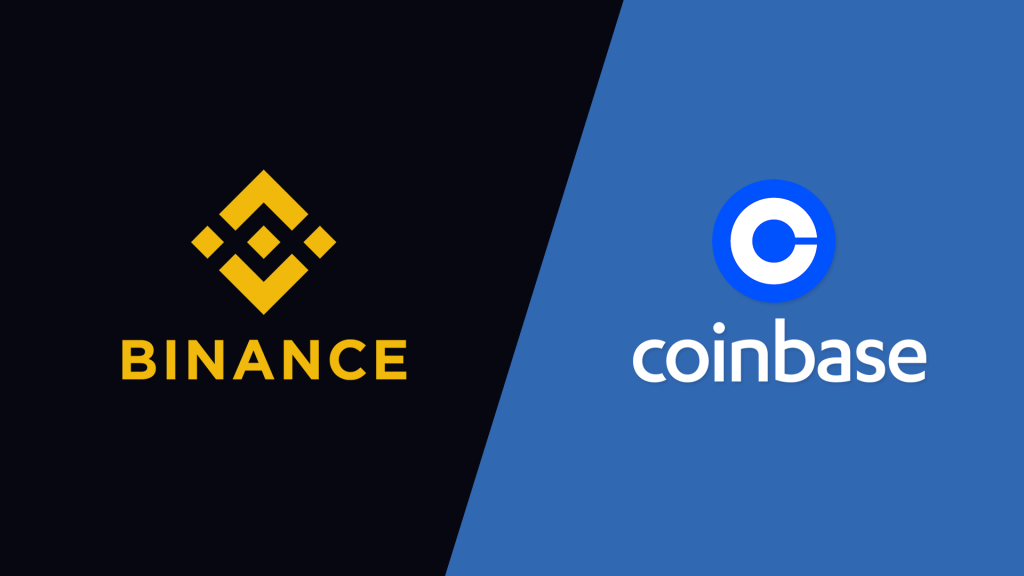
Coinbase features many times more trading options in terms of the coins and tokens available, and the trading volumes are much greater than those of Binance US.
However, Binance US is hot on its heels with adding new cryptos to its trading portfolio, and their fees are a much more attractive prospect for anyone wanting to get into trading.
The coming years will surely be an interesting time for cryptocurrencies and the trading thereof. It remains to be seen if Binance US will dethrone Coinbase as the premier cryptocurrency trading option. Still, until then, we will watch the Binance US vs Coinbase debacle with great interest.
